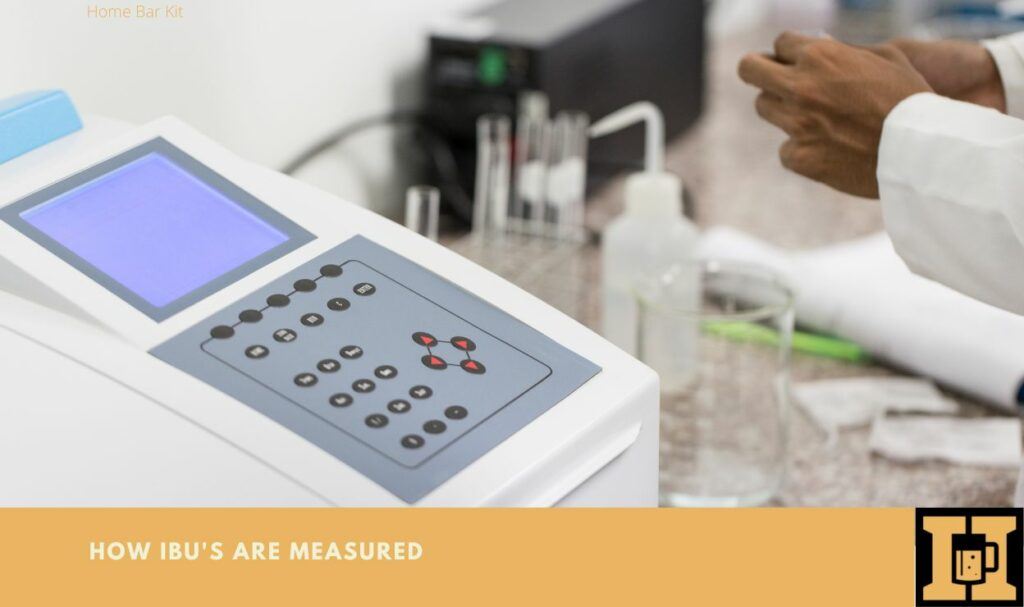Many people may not have heard of the term IBU when it comes to beer. However many craft beer enthusiasts will have seen or at least heard of it. And many will know what it is, but for those that don’t, I will explain it without too much science involved. So what is IBU in beer and does it really matter?
Checkout a beer can or bottle in your cooler to see if there is an IBU number on it. This number could be between 1 and 120. However many beers will not have one shown, it seems to be mostly craft beers that display the IBU number.
IBU stands for International Bitterness Unit, or sometimes referred to as International Bittering Unit. It is a measurement of how bitter a beer is and displayed by a number. The higher the number the more bitter a beer will be in theory. However other ingredients used in the brewing process can balance out the bitterness.
Read on to find out what IBU’s mean to breweries, how they measure them and what they mean to the consumer.
Table Of Contents
What Is IBU In Beer?
So we know that IBU is a scale to define the bitterness of a beer. For the purpose of beer, the scale ranges from 0 – 120 IBU’s. Having said that beers have been brewed with way more than this. One such beer was brewed with an 3000 IBU.
However it is understood that the human ability to taste any more bitterness over 120 IBU’s is slim. So what is the point of a 3000 IBU beer?
Although I would still try a 3000 IBU just to see what it is like. So maybe displaying an IBU number is more of a marketing thing for a brewery.
The bitterness in beer comes from the hops and the boiling process they go through. Hops contain Iso-Alpha Acids which are released during the brewing process. There are also Beta acids in hops which are released through oxidation during fermentation and storage.
However these are a harsher kind of bitterness. So it is the Alpha Acids that are important for the bitterness of the beer. Hops added early in the brewing process will add bitterness and the longer they are boiled the more bitterness released giving a higher IBU.
Hops added later on in the brewing process known as dry hopping, will add aroma rather than bitterness. So we now know what an IBU in beer is. But what beers have a low IBU and what beers have a high IBU.
IBU By Beer Style
There are many different beer styles and each one falls roughly into a certain IBU range. However there are exceptions to the rule, so this is just a rough guide.
- Light Lagers – 5 – 10
- Blonde Ales – 10 – 25
- Amber Ales – 20 -25
- Pale Ales – 30 – 50
- Bitters – 25 – 50
- Porters – 20 – 50
- Stouts – 30 – 90
- IPA’s – 30 – 120
There are obviously a lot more beer styles, but this is to give a general idea. Just as the IBU numbers are also a general guide too.
IBU’s In The Brewing Process
Brewers will measure the IBU of a beer, and can even target a certain IBU number before they start brewing. The IBU number over time from brew to brew of the same beer can indicate the consistency of that beer.
They can control the level of bitterness by the type of hops they use. Those with more Alpha Acids will potentially produce more bitterness. The amount of hops they use can contribute to how bitter a beer will be.
Just as how long the boiling process goes on for can contribute. Longer boiling will release more bitterness from the hops.
So IBU’s in the brewing process can be important to a brewery, but how do they measure the IBU level of a beer?
How IBU’s Are Measured

A common way of measuring the bitterness level in beer is known as spectrophotometry.
Basically the hops are boiled to release the Alpha Acids and they become a little repellent within the wort. They settle in their own layer within the boiled wort. A spectrophotometer is then used to read the amount of light absorbed by the Alpha Acids.
Another method used for bitterness measurement is High Performance Liquid Chromatography (HPLC) which separates, identifies and quantifies components.
For home brewers that don’t have the equipment needed, can use an IBU calculator to estimate the bitterness value of their beer.
IBU’s For The Consumer
What does this IBU malarky mean for the consumer, the ones that drink the beer?
I would say that it acts as a rough guide of how bitter a beer might be. However we have to take into account that a particular stout might have a higher IBU than a particular IPA. Yet the IPA seems to be more bitter to taste than the stout.
This is because the stout may be balanced out with more malt and other tastes like chocolate. Although the IBU is higher it seems sweeter and less bitter than the IPA.
This is why we can only use the IBU number as a rough guide to the bitterness of a beer. Plus we all have different tolerances to bitterness, just like spices in food.
Two people drinking the same beer will perceive different levels of bitterness. And on top of that, not all breweries display the IBU number on the can or bottle.
So what is the point?
Do IBU’s Really Matter?
We all ready know that IBU’s do matter for the brewery. For the consumer it doesn’t really matter, but can be a useful tool to identify whether we are likely to enjoy a beer or not.
We all have a favourite type of beer, and if we identify the average IBU strength of the beers we enjoy. We might find that they all fall into a similar IBU score.
This gives us a tool to use to see if we will like a beer or not. When we know the IBU score before we drink a beer, we can tell whether it will fit to our taste.
We then stick to beers with an IBU range we know we like. However this will not always work because as we know not all breweries display the IBU on their packaging.
However it is possible to get a general idea from the beer style as shown earlier. There will be exceptions to this, but generally it is the best guide we have.
Final Thoughts
Although IBU in beer may not mean as much to the consumer as the brewer. An IBU number can give us a general guide now we know what it actually is.
So if you buy a can or bottle of beer and it does have an IBU number displayed you will know roughly how bitter it is likely to be.
Also if you get to visit a craft breweries taproom, or a craft beer pub, then they normally display the IBU value on the beer menu.
Go found out your own IBU range and enjoy the beers in that range. And if you have any other information about IBU’s, then do share your thoughts below.
Rob is a passionate home bar and pub shed enthusiast with a passion for craft beer. With hands-on experience in designing and building his own home bar, Rob shares his knowledge, tips, and inspiration to help fellow enthusiasts create their own perfect space. Alongside the world of home bars and pub sheds, Rob also explores the diverse and exciting realm of craft beer, providing honest reviews to help you discover your next favorite brew. Join Rob on a journey of flavor, design, and craftsmanship right here on Home Bar Kit.

